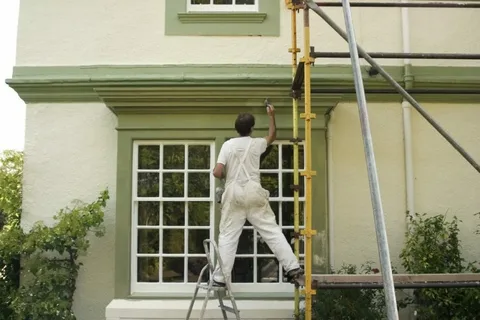A flawless Exterior painting job not only boosts your property’s curb appeal but also protects your home from weather damage, moisture, and other environmental factors. Whether you are tackling the project yourself or hiring a professional, understanding the right techniques, materials, and preparation steps is essential for a long-lasting result. As someone who has seen countless paint jobs succeed — and some fail — I can tell you that quality outcomes depend heavily on preparation, product choice, and skill. Professionals like Ever’s Painting bring a level of expertise and precision that ensures every detail is handled correctly from start to finish.
In this guide, we’ll explore key tips and expert insights to help you achieve a smooth, even, and durable Exterior painting finish that stands the test of time.
Preparing the Surface Properly
One of the most overlooked aspects of Exterior painting is surface preparation. Without a clean, smooth base, even the highest-quality paint will fail to adhere properly.
- Clean thoroughly – Use a pressure washer or scrub brush to remove dirt, mildew, peeling paint, and chalky residue.
- Repair imperfections – Fill cracks, sand rough spots, and replace damaged wood or siding.
- Prime the surface – A high-quality primer seals the surface, improves adhesion, and enhances the paint’s durability.
Skipping these steps can result in peeling, bubbling, or uneven finishes within just a year or two.
Choosing the Right Paint and Tools
The success of your Exterior painting project is tied closely to the materials and tools you use.
- Paint type – Acrylic latex paints are durable, weather-resistant, and easy to clean.
- Finish – Satin or semi-gloss finishes work best for exterior surfaces, as they resist moisture and are easier to maintain.
- Tools – Invest in professional-grade brushes, rollers, and sprayers for even coverage.
High-quality tools and materials may cost more upfront but will save you money in the long run by reducing maintenance and repainting needs.
Timing and Weather Conditions
Even the best paint can fail if applied in the wrong conditions. Choose a time when the weather is mild — ideally between 50°F and 85°F — and humidity levels are moderate.
Avoid painting in direct sunlight, as it can cause the paint to dry too quickly, leading to lap marks or uneven texture. Similarly, rainy or overly humid conditions can prevent proper curing.
Applying Paint Like a Pro
When it comes to Exterior painting, application technique matters just as much as preparation.
- Work from top to bottom – This prevents drips from ruining freshly painted areas.
- Maintain a wet edge – This technique ensures seamless blending between strokes.
- Use thin coats – Two thin coats are better than one thick coat for durability and coverage.
A professional painter will also know how to manage transitions between different surfaces, such as siding and trim, for a crisp, clean finish.
Maintaining Your Exterior Paint Job
A flawless paint job can last 7–10 years with proper care. Maintenance steps include:
- Inspecting for peeling or fading annually.
- Touching up small areas before they become larger problems.
- Washing the exterior gently to remove dirt and prevent mildew growth.
This preventive approach will help extend the life of your investment.
Common Mistakes to Avoid
- Skipping primer – Without it, paint may not adhere properly.
- Poor surface cleaning – Painting over dirt or mildew shortens paint lifespan.
- Overloading the brush – Leads to drips and uneven coverage.
Learning from these mistakes — or avoiding them entirely by hiring an experienced professional — will result in a more durable and attractive finish.
Why Hiring a Professional Can Make the Difference
While DIY Exterior painting can be rewarding, professionals bring skill, efficiency, and industry knowledge that ensure a flawless finish. They know which products work best in your region, how to prepare different materials, and how to work safely at heights.
A seasoned painter also offers warranties on their work, giving you peace of mind that your home will look great for years.
Conclusion
Achieving a flawless Exterior painting finish takes planning, patience, and the right techniques. From careful surface preparation to choosing high-quality paints and applying them correctly, every step contributes to the longevity and beauty of the result. While skilled homeowners can handle the job themselves, hiring an experienced professional ensures your home gets the attention to detail it deserves. A well-done exterior paint job is more than just cosmetic — it’s a long-term investment in your property’s value and protection.
FAQs
What is the best time of year for Exterior painting?
Spring and early fall are ideal, with mild temperatures and low humidity.
How long does an exterior paint job last?
A high-quality paint job can last 7–10 years, depending on climate, paint type, and maintenance.
Do I need to pressure wash before painting?
Yes. Cleaning the surface ensures proper paint adhesion and helps the finish last longer.
Should I use a brush or a roller for Exterior painting?
Both have their place — brushes are great for detail work, while rollers and sprayers provide faster coverage for large areas.
Is primer necessary for all surfaces?
While not always required, primer improves adhesion, seals porous surfaces, and enhances durability.
